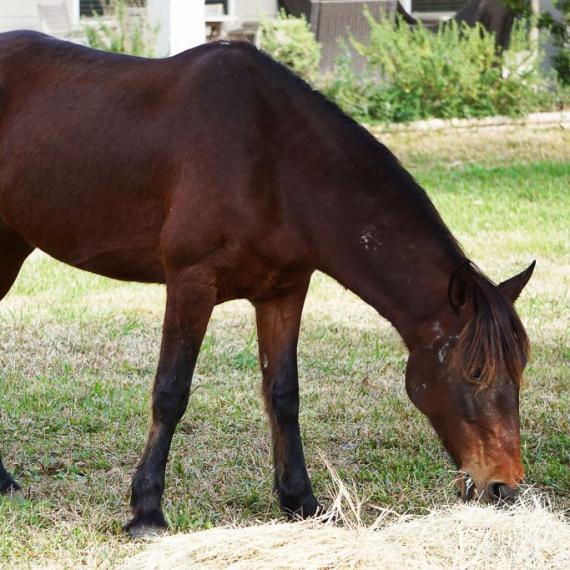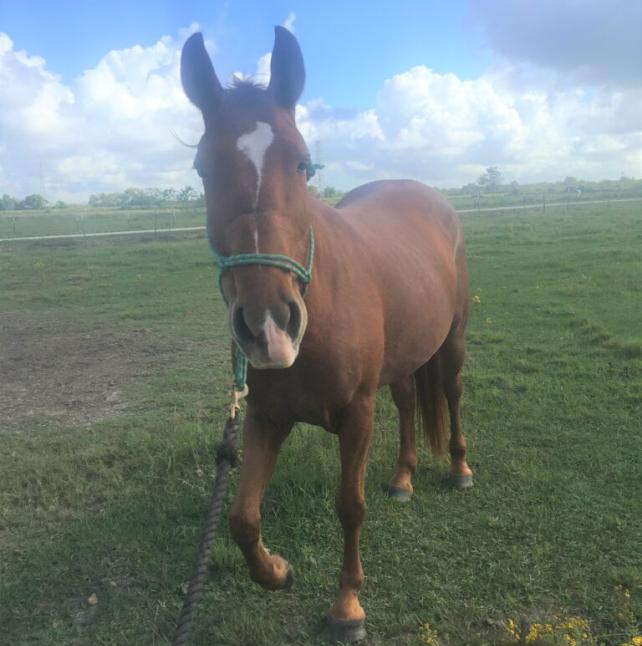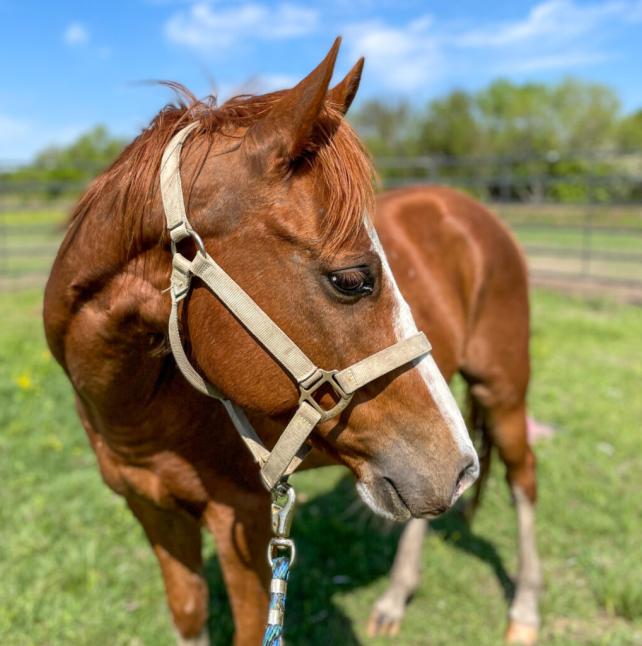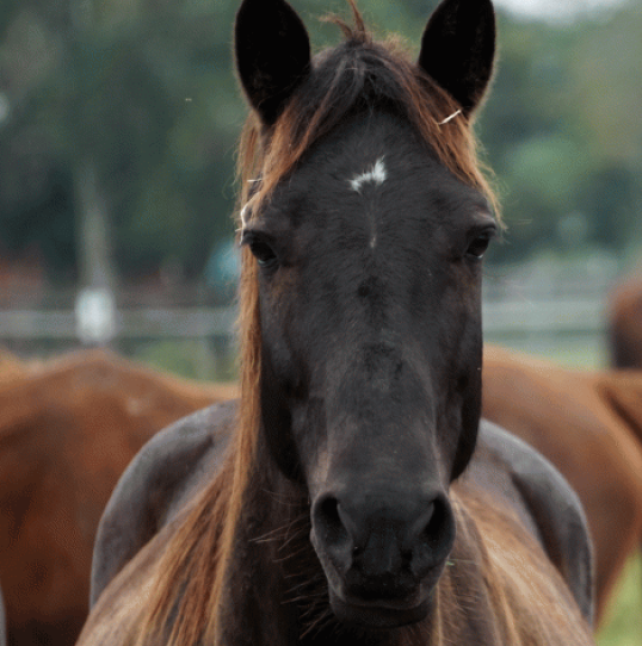Adoption Policy
Habitat for Horses has a thorough adoption policy for placing horses in qualified homes, and all applications will be considered based on your ability to provide the best home for the horse. The adoption fee is non-negotiable as it allows us to continue our operation to rescue equines, bringing them back to health and finding homes for other horses.
What to Expect
If you are qualified, we want more than anything for you to adopt one of our equines. The primary step is for you to actually put your hands on the horse or donkey of your dreams. Equines should never be adopted just because they “look pretty.” This is hopefully a lifelong commitment that you are making, so take your time and make certain that the horse or donkey you are seeing is really the one you want.
If, during the inspections, we find some problem areas we will advise you on how to bring them up to our minimum standards of care.
After your adoption is complete, we conduct periodic inspections. These inspections have two goals:
- To be of assistance to you in case there are any problems, and
- To make certain that the horse or donkey is doing well in their new environment.
The equine adopted from us is not to be used for breeding, cannot be sold, transferred, leased or moved without notifying us. Once adopted, yours is the permanent home for that equine. If something happens and you can no longer keep the horse or donkey you adopted, you’ll need to contact us. We’ll make arrangements for the equine’s return to Habitat for Horses.
Adoption Regulations
The following guidelines are for general equine management and are required of all persons adopting a horse from Habitat for Horses. While not exhaustive, they offer basic parameters for responsible equine ownership. In addition, any individual keeping horses must comply with all relevant state and local law.
General Management Practices
Various types of enclosure are available to confine equines, including, but not limited to stalls, dry lots or pastures. In addition, equines shall be provided sufficient opportunity and space to exercise daily and have freedom of movement as necessary to reduce stress and maintain good physical condition. Space and provisions for exercise shall be appropriate for the age, condition and size of the equine.
Group pasturing of compatible equines to allow social interaction is encouraged. If equines are individually stalled, they must be able to make visual contact with other equines, unless otherwise directed by a veterinarian for the safety of the equine in question or other equines at the facility.
Facility Requirements
The following are requirements in order to foster an equine. However, all applicants will be considered on a case-by-case basis:
Pasture
A minimum of half-acre pasture per equine on the property. Exceptions may be made in those cases where the equine will be maintained at a boarding facility provided the equine, if stalled, is provided daily turnout of an adequate time and space.
Shelter
A recommended 12×12-foot stall per standard size equine in barn with turnout or pasture; or a three-sided run-in shelter with a recommended 12×12 feet per equine in pasture, however, the minimum acceptable space is 10.5×10.5-foot stall or run-in area per standard size equine.
Equines shall be provided with shelter that gives protection from extreme weather including but not limited to: prevailing wind, snow, sleet, rain, sun and temperature extremes. Stalls and shelters shall be constructed to provide sufficient space for each equine to turn around, lie down and move freely and to allow free air flow. Shelters may be constructed to have removable sides during the summer. All enclosures, stalls and shelters shall be kept in good repair and free of standing water, accumulated waste, sharp objects and debris. If the barn or shelter is metal, the exposed metal on the inside of the stall and/or shelter shall be covered with ¾” to 1″ plywood or 2″x6″ boards. There should be no exposed nails or other objects that could potentially cause injury to the equine.
Water
The adopter shall provide troughs or individual water sources to offer adequate and clean water for all equines. All water receptacles shall be kept clean and free of hazardous contaminants and be positioned or affixed to minimize spillage. Use of a defroster to prevent freezing in inclement weather is recommended. Equines who are being trained, worked, ridden or transported shall be provided water as often as necessary for their health and comfort. Frequency of watering shall take into consideration the age, condition and size of the equine, activity level and climatic conditions.
Food and Storage
Equines shall receive at a minimum the equivalent of 3% of their body weight per day in high quality forage and grain. If natural forage is insufficient in quality or quantity, quality hay representative of choice grasses in the local area shall supplement the diet. Diet shall be planned with consideration for the age, condition, size and activity level of the equine. If more than one animal is fed at the same place and time, it shall be the responsibility of the adopter to ensure that each equine receives nutrition in sufficient quantity. If necessary, equines shall be separated to ensure each has access to adequate nutrition without interference from more dominant equine. Individual feed buckets or pans should be provided for each equine. All storage and feeding receptacles shall be kept clean and free.
Fencing
Fencing shall be of solid construction, without sharp edges and visible to equines; electric fencing is acceptable. The use of barbed wire fencing is unacceptable in any area of five or less acres or along any side of any area separating equines from one another. Use of electric wire may preclude the barbed wire provision. All t-posts shall be appropriately capped when used as cross fencing to separate pastures, along any fence line adjacent to another equine property or/and property that is less than five acres. Fencing shall be monitored on a regular basis to ensure its safety and effectiveness is maintained. Absolutely NO 4×4 wire fencing!
Basic Care and Health
Vaccinations, Dental Care, Hoof Care, Worming and Coggins
Under Current Texas Law: “A negative EIA test within the previous 12 months is required for all equines, except zebras, which are eight (8) months of age or older, when changing ownership in Texas. Equine animals stabled, boarded or pastured within 200 yards of equine belonging to another person shall be considered to be a congregation point. All equines must have a negative EIA test within the last twelve months.”
Yearly vaccinations are required. Eastern/Western Encephalitis, Rhino, Tetanus, Rabies, West Nile and any other inoculations your veterinarian recommends for endemic diseases are mandatory. Teeth must be kept in good condition and should be checked by a licensed veterinarian annually. All equine must be kept on a regular deworming program as approved by a licensed veterinarian. Proper hoof care is required to be done as often as necessary to maintain sound hooves.
Maintaining Health
All equines must maintain weight and condition as described by the Henneke Body Condition Scoring System (see attached description) between moderate (5) and fleshy (7) unless under the direction of a licensed veterinarian. Cuts, sores and illnesses which normal animal husbandry practices would require veterinarian care must be attended to immediately by a licensed veterinarian.
Gelding
All stallions shall be gelded as soon as possible unless, under the advice of a licensed veterinarian, such gelding would cause harm to the equine due to age or health.






